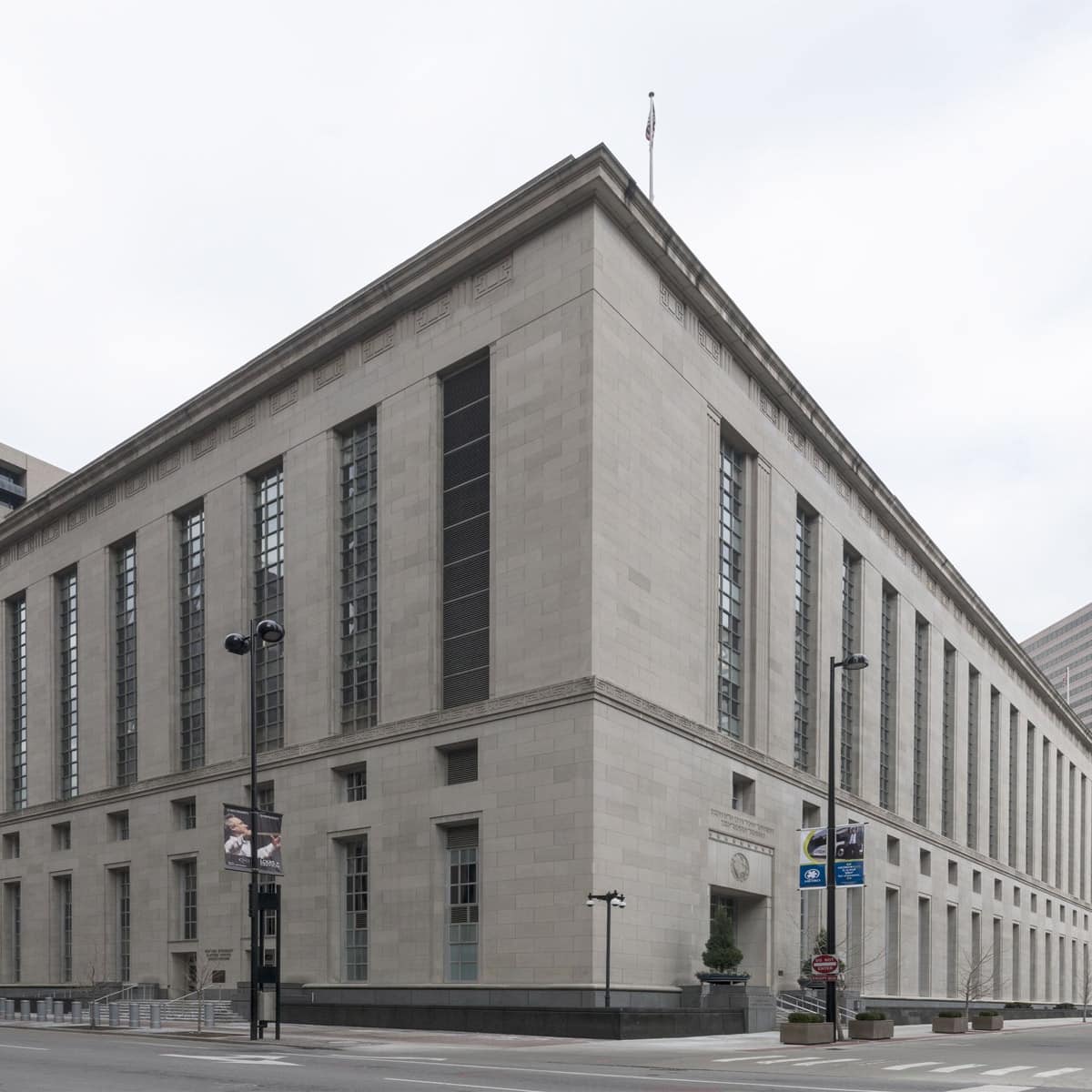 The 6th Circuit is a federal –level court of appeals located in Cincinnati, Ohio. Its jurisdiction includes all of Michigan, Ohio, Tennessee, and Kentucky. It is helmed by a complement of 16 judges.
The 6th Circuit is a federal –level court of appeals located in Cincinnati, Ohio. Its jurisdiction includes all of Michigan, Ohio, Tennessee, and Kentucky. It is helmed by a complement of 16 judges.
In the hierarchy of the judicial branch of government, the 6th Circuit resides just beneath the U.S. Supreme Court as a regional federal appeals court. Twelve regional appellate courts exist across the country, and there’s one special Federal Circuit Court of Appeals that hears certain cases involving trade, patents, and similar issues. The U.S. Constitution is the basis for the authority of federal judges; they are appointed by the President and may hold their positions for life after Congressional approval. They are assisted by magistrates.
In federal appeals courts, judges hear cases and render decisions as the jury system is notused.
At the federal level the circuit or appellate courts have jurisdiction over the 94 U.S. District Courts that are within their regions. Federal district courts within the 6th Circuit include two in Kentucky, two in Michigan, two in Ohio, and three in Tennessee.
Appeals of bankruptcy court decisions are heard by a panel of three judges within the 6th Circuit. Five courts at this level include a bankruptcy appeals division.
Sixth Circuit Court Process
Before a civil case can be tried in the 6th Circuit, the parties are required to attempt to reach a compromise through mediation; this is a result of a “local rule.” The parties may also decide to skip having a jury decide their case, opting instead for a bench trial heard by an individual judge. The court decides both criminal and civil cases, those that may result in penalties of $75,000 or more, and cases that cross state lines. District court decisions may be appealed to the regional circuit court.
There are five district courts within the 6th Circuit. If a case decided by a federal district court is appealed to the 6th Circuit, it may go to the U.S. Supreme Court if the Supreme Court justices seek it out or if a party to the case successfully petitions the Supreme Court to review the circuit court’s decision.
Sixth Circuit Court Statistics
In the past 10 years, the court has started its session with nearly 5,000 cases on its docket. To that, at least 4,500 more are filed. At least 4,500 cases are terminated each year, and each of the judges writes an average of over 140 decisions each. Records show the Supreme Court has considered three of the 6th Circuit’s decisions and reversed two in a recent session, for an above-average percentage of cases overturned.
Prominent Sixth Circuit Cases
In 2015 the court refused to force a religious institution to reinstate a woman it had fired for being divorced. The woman, who held the title “Spiritual Director” at the organization, had been placed on paid leave then fired when going through a divorce. She sued, claiming men in the same role had kept their jobs despite being divorced, but the court sided with the religious organization’s right to choose its own leaders.
The court sided with Case Western University in 2015 on a case in which medical professionalism was considered. A student who had been singled out for his lack of appropriate decorum in the classroom and even in a hospital setting was denied his degree when the university learned that he had a conviction for operating under the influence in another state. Despite taking extra classes on medical professionalism and ethics, the student’s behavior hadn’t changed, so the university determined that the motor vehicle violation was the last straw, and cited it as the final factor in the decision to withhold the student’s degree. When the student sued, the court found that among the university’s stated competencies, professionalism was first, so the decision to deny the student his degree was upheld.

